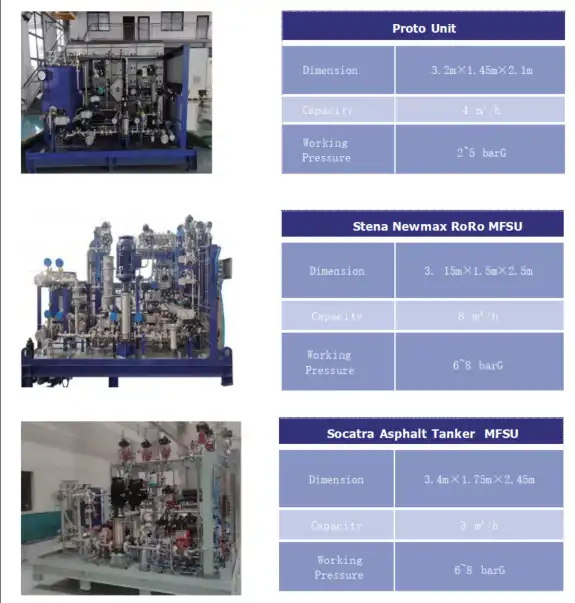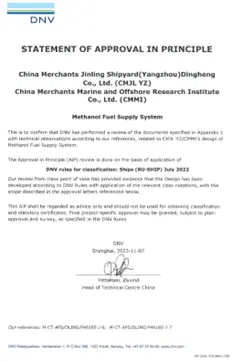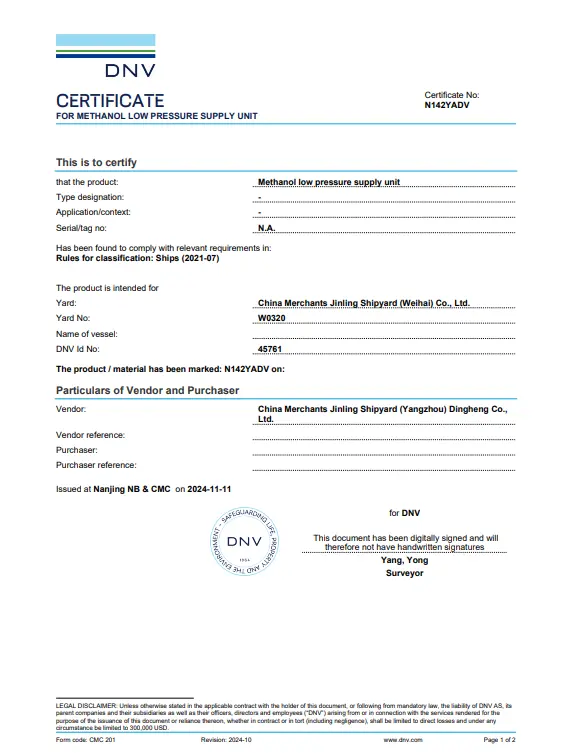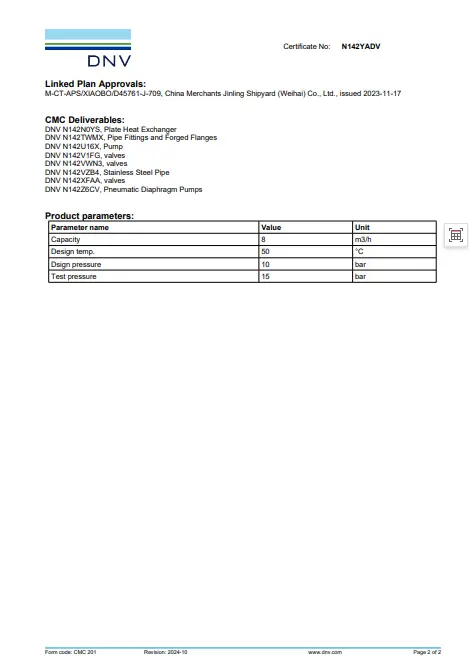Methanol Supply Infrastructure
Overview of the Methanol Supply Infrastructure (MFSS)
The Methanol Supply Infrastructure (MFSS) is made up of several core subsystems, including the filling and transfer module, the main supply unit, auxiliary support systems, and safety and control mechanisms. We are fully equipped to design and manufacture MFSS units independently or to deliver fully customized solutions tailored to specific client requirements.

WHY CHOOSE US?
1. Extensive Industry Expertise – Our team possesses deep expertise in designing and constructing dual-fuel vessels, chemical tankers, liquefied gas carriers, and related engineering systems.
2. Integrated End-to-End Solutions – We offer a full range of solutions, including Methanol Supply Infrastructure (MFSS), LNG Fuel Supply Systems (FGSS), Ammonia Fuel Supply Systems (AFSS), and LPG Cargo Handling Systems (CHS).
3. Proven Experience – With 19 successful clean fuel supply and cargo handling system deliveries—among them two MFSS skids for Stena RoRo—we consistently demonstrate high standards of quality and performance.
4. Innovation Pioneer – As a leading developer of methanol fuel supply units in the domestic market, we initiated R\&D and sales efforts as early as late 2022.
5. Comprehensive Lifecycle Support – We provide full-lifecycle service, from system design and production to installation and multi-unit construction, including robust after-sales support.
Product Specifications

Product Overview
1. METHANOL SUPPLY UNIT – This unit ensures that methanol-related parameters—pressure, temperature, flow rate, and cleanliness—consistently meet the specifications required by engine manufacturers. It delivers stable pressure and flow regardless of engine load and remains reliable during startup, shutdown, or transitional phases.
2. FILLING & DELIVERY SYSTEM – Designed strictly in accordance with SOLAS-IBC Code standards applicable to chemical tankers, this system ensures the safe handling of methanol throughout bunkering, storage, and transfer, accounting for its low flashpoint, toxicity, and corrosiveness.
3. MODULAR STRUCTURE FOR FLEXIBLE DEPLOYMENT – The system's modular design allows for flexible installation and adaptation to the vessel’s configuration. It is available as a standalone unit or integrated into a complete system.
4. FULL COMPLIANCE WITH SAFETY STANDARDS – Engineered to meet both SOLAS-IBC chemical safety requirements and IGF Code standards for low flashpoint fuels, the system ensures safe and compliant operations at all times.
5. TAILORED SOLUTIONS FOR SHIPOWNERS – Whether for new construction or retrofit projects, we provide customized solutions that are both reliable and adaptable to operational needs.
QUALITY ASSURANCE
DNV AIP Certificate



Installation Process
1. Begin by thoroughly reviewing the vessel’s design documentation and interface specifications, resolving any pending technical issues in advance.
2. Prepare all necessary installation tools and equipment, and ensure all safety procedures are implemented before starting.
3. Deliver the prefabricated methanol fuel supply module to the installation site, positioning it using suitable lifting equipment.
4. Secure the base of the module to the vessel structure, ensuring precise alignment and adherence to flatness and stability standards as per design.
5. Connect the methanol piping, auxiliary pipelines, and control cables, checking the sealing quality and verifying the integrity of all electrical connections.
6. Conduct both subsystem-level and integrated system tests to confirm that the bunkering, supply, and safety control functions are fully operational.
For more product information about Methanol Supply Infrastructure, please leave a message below.

